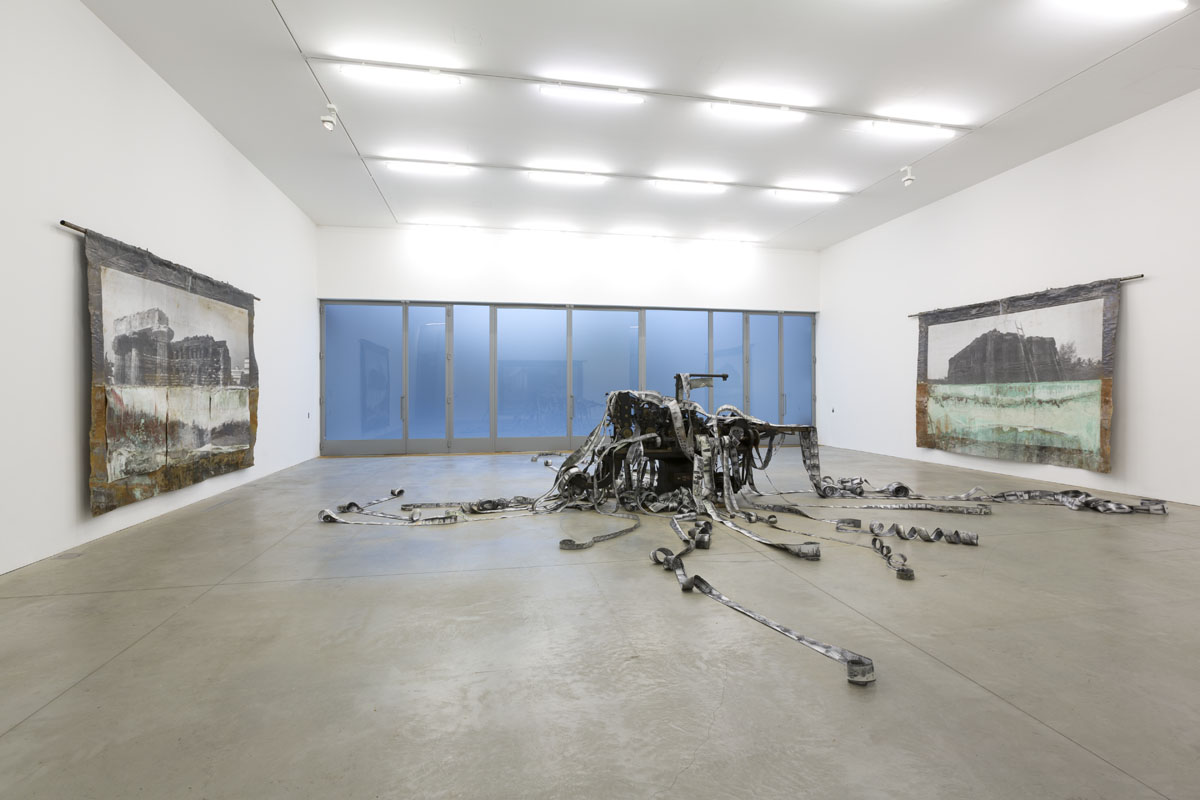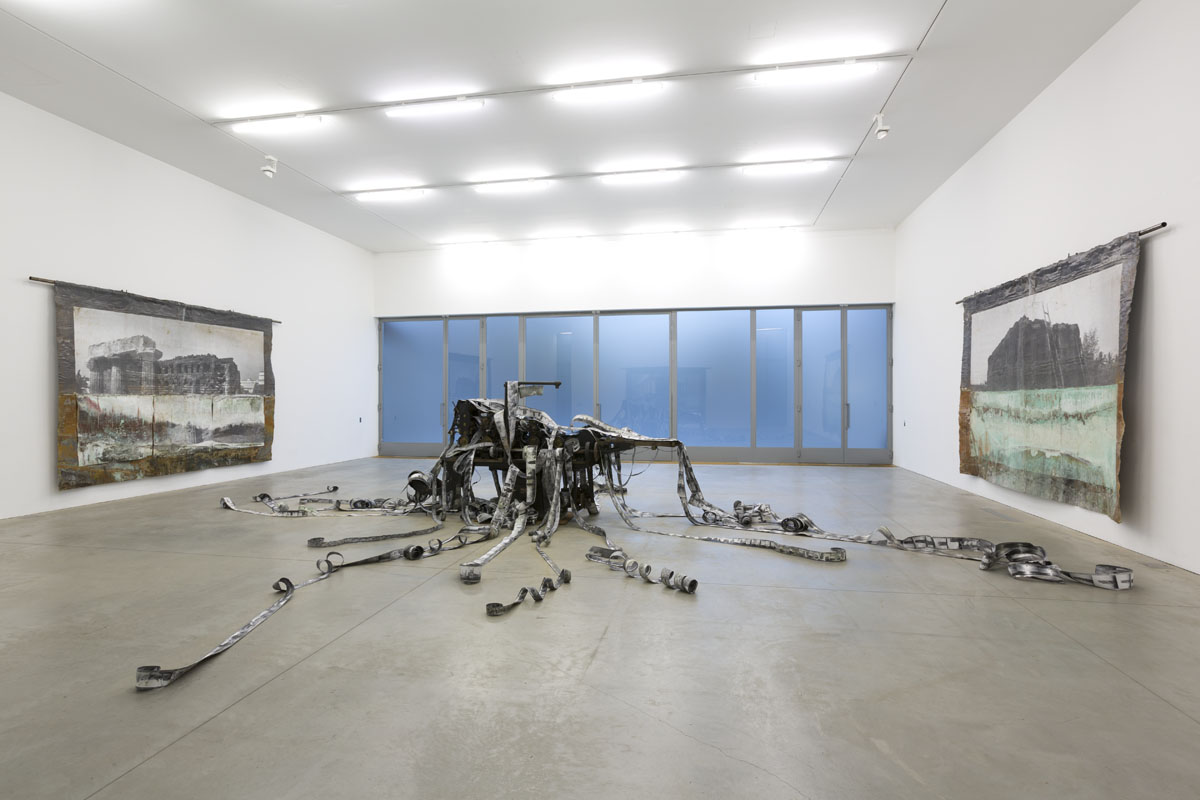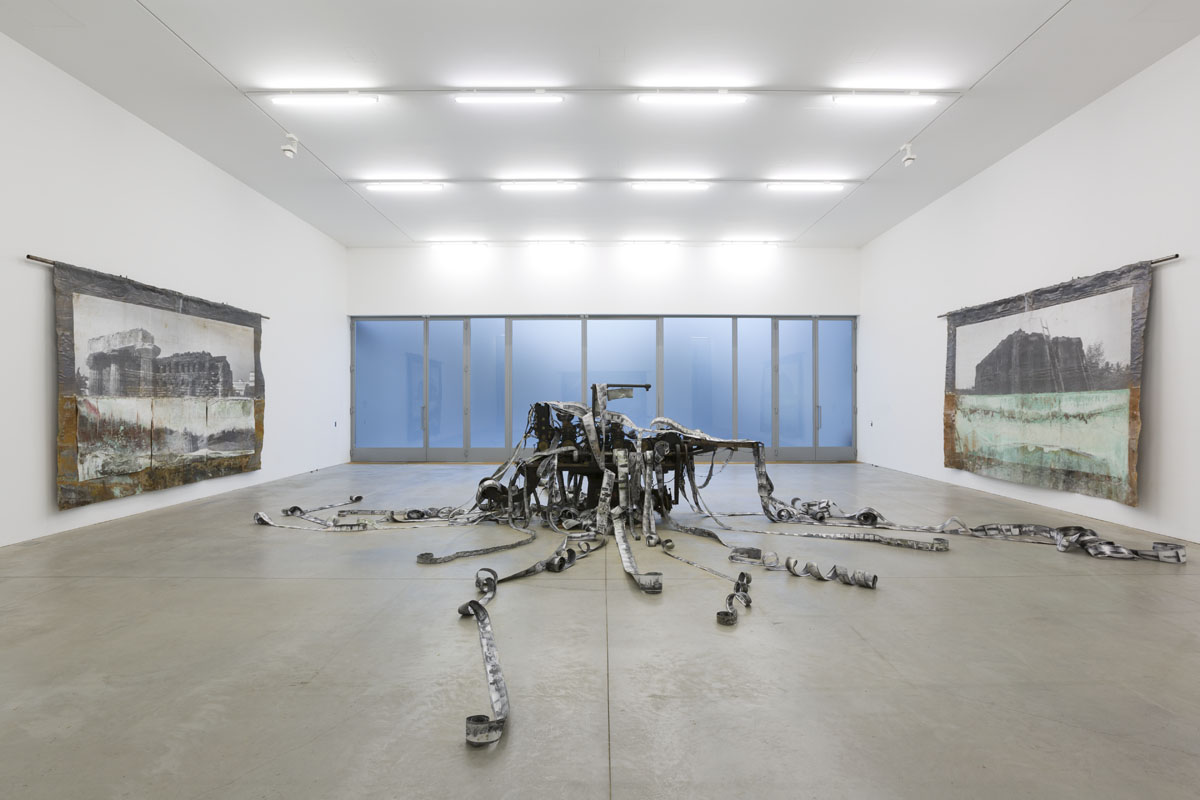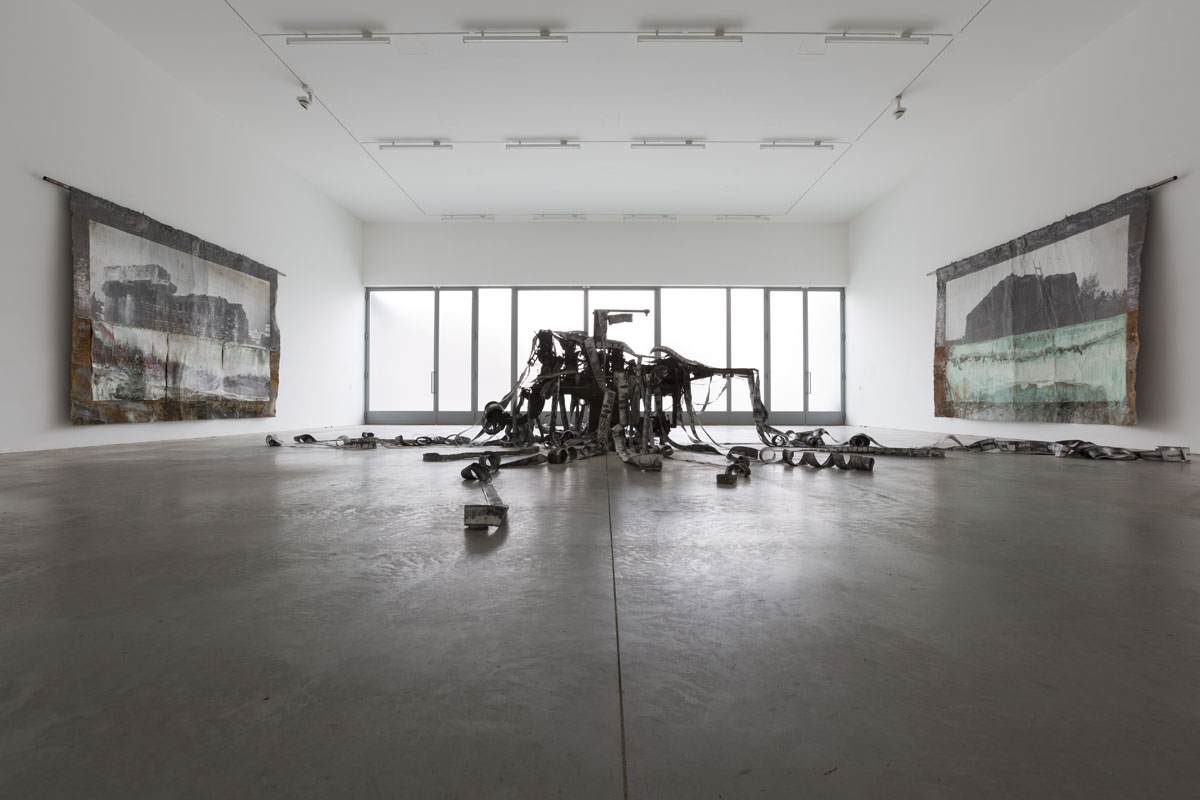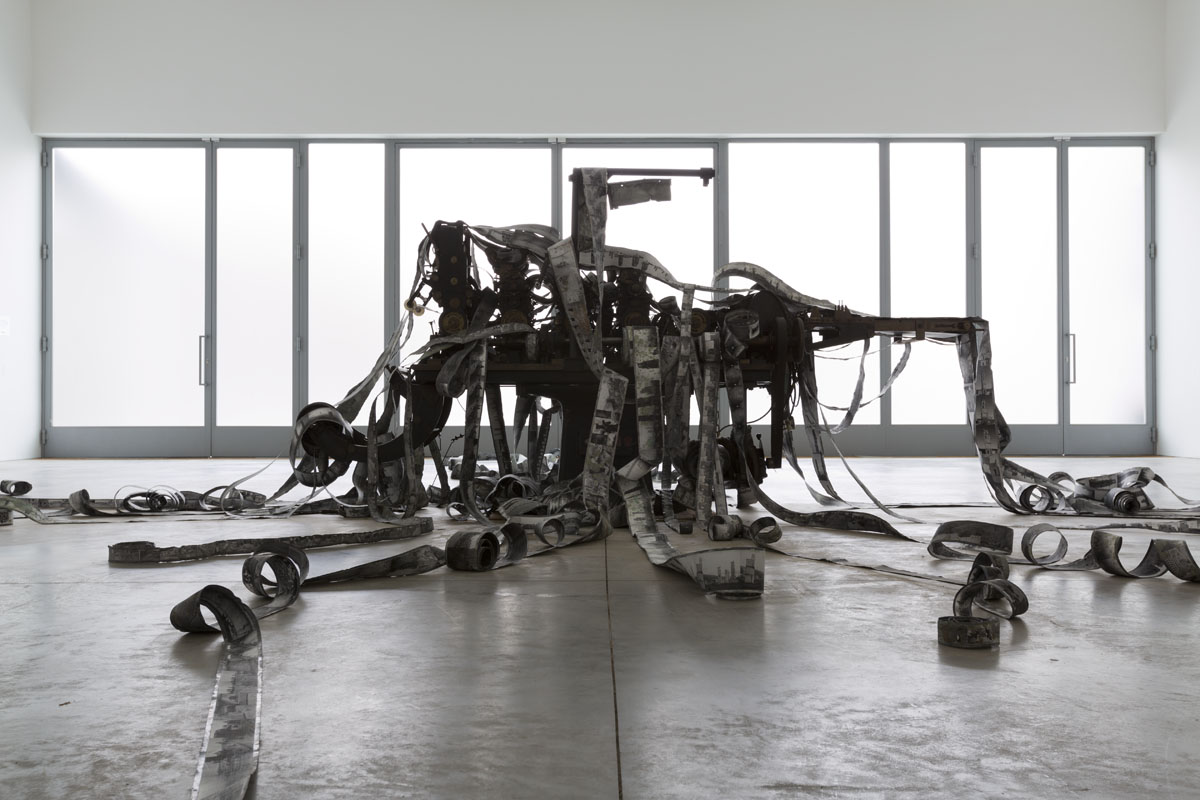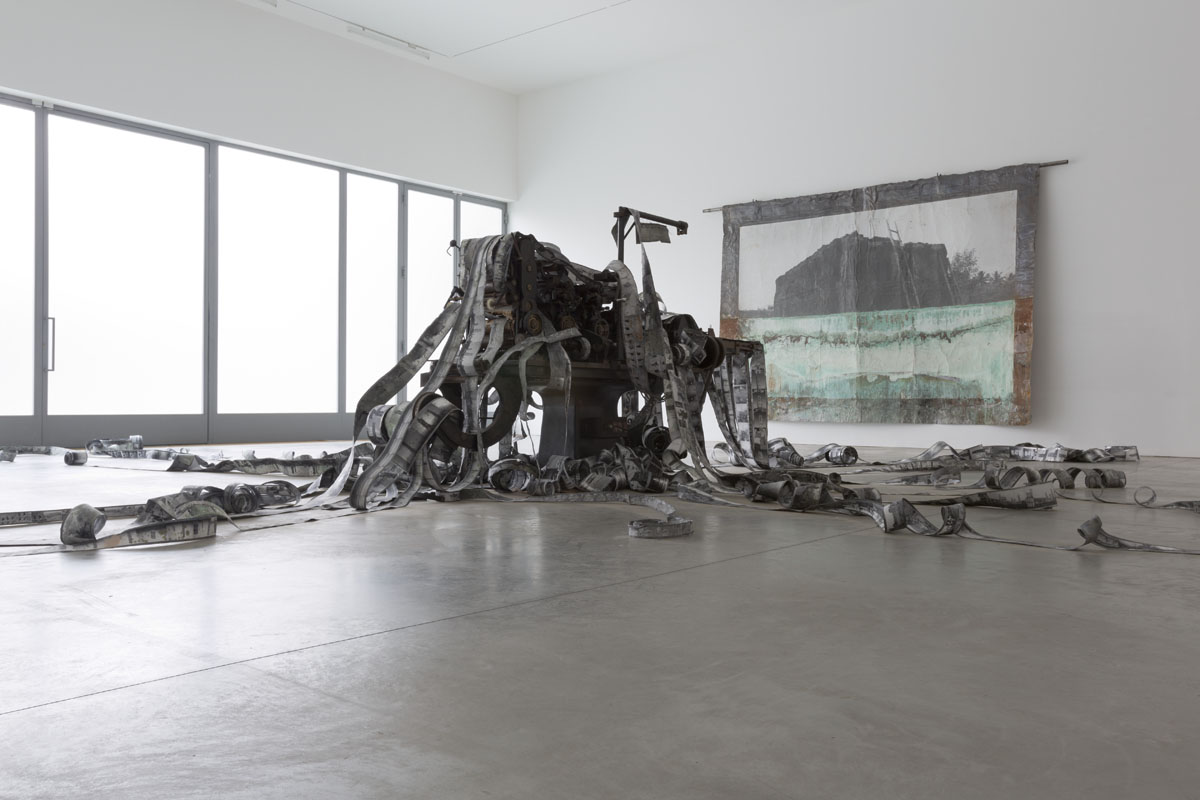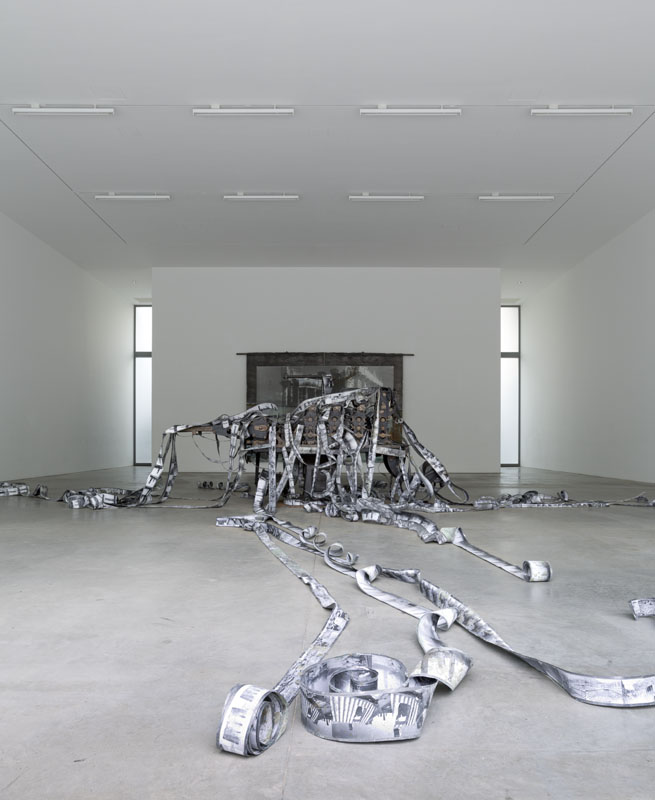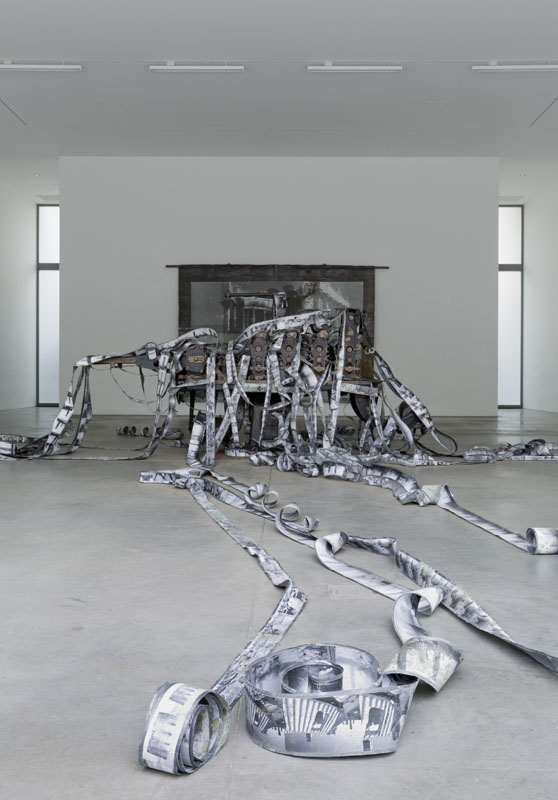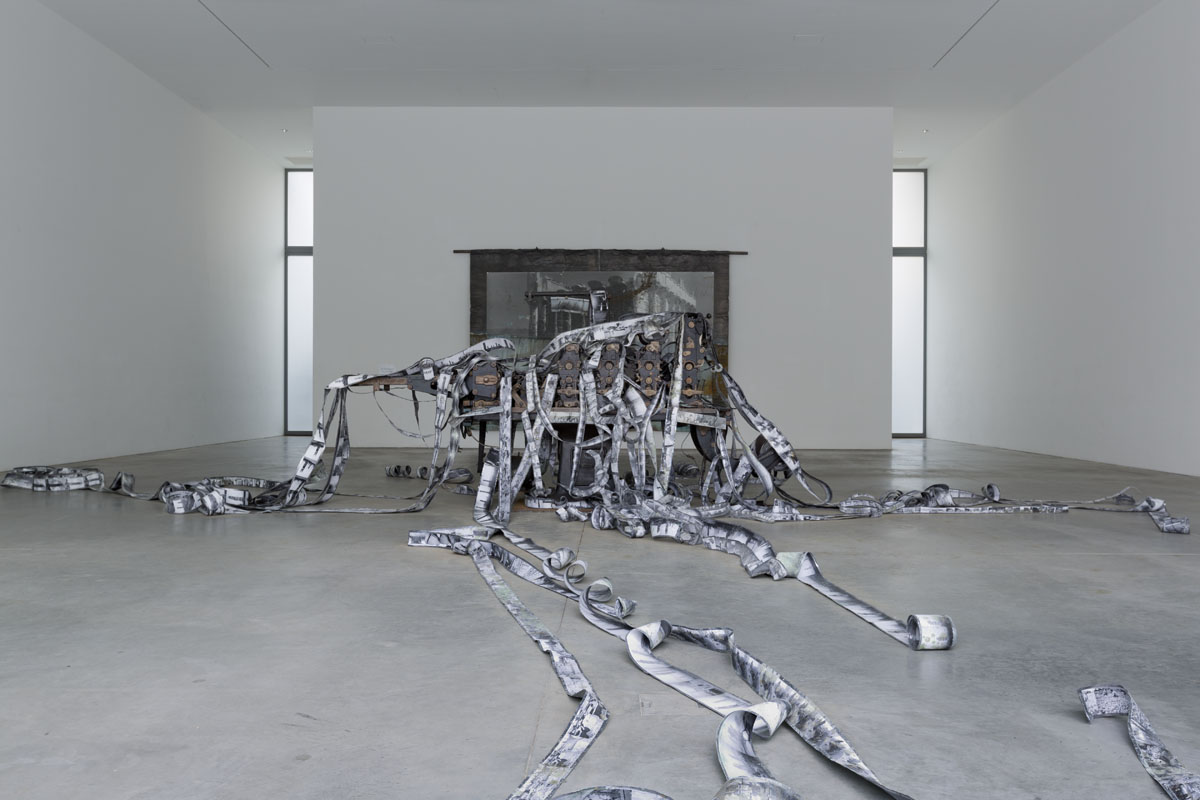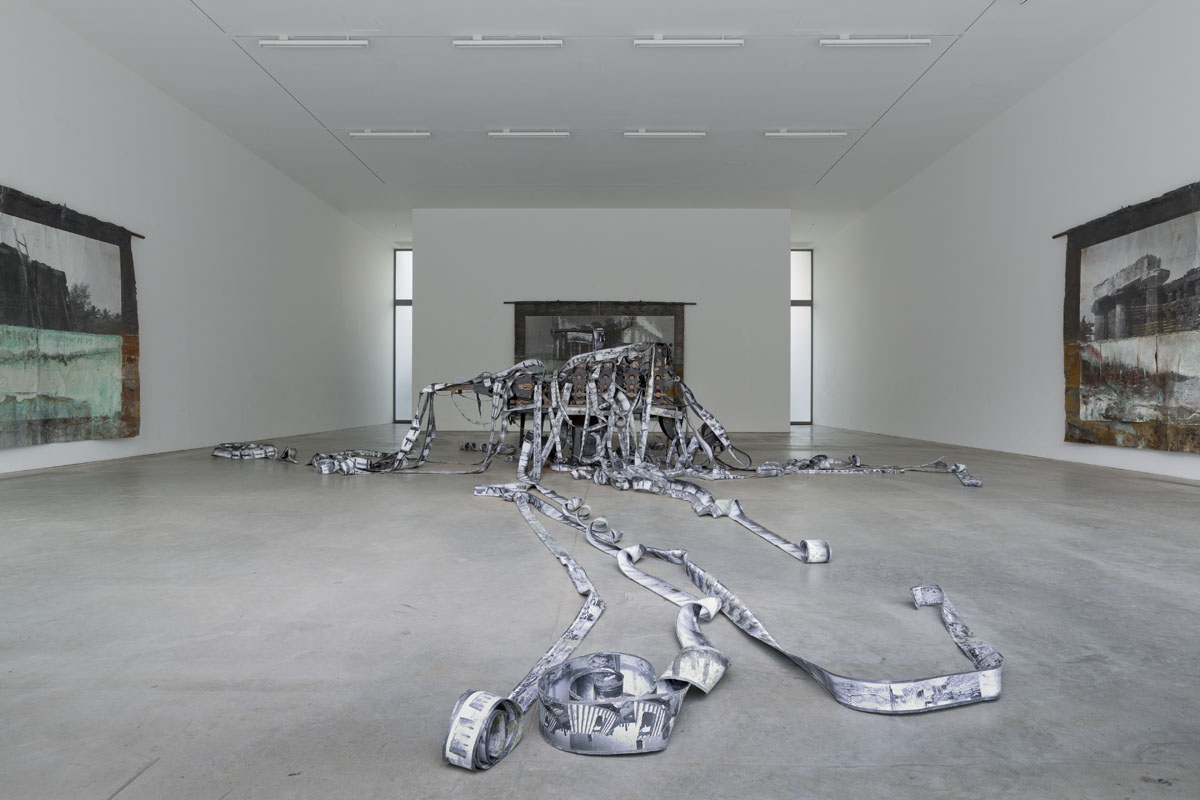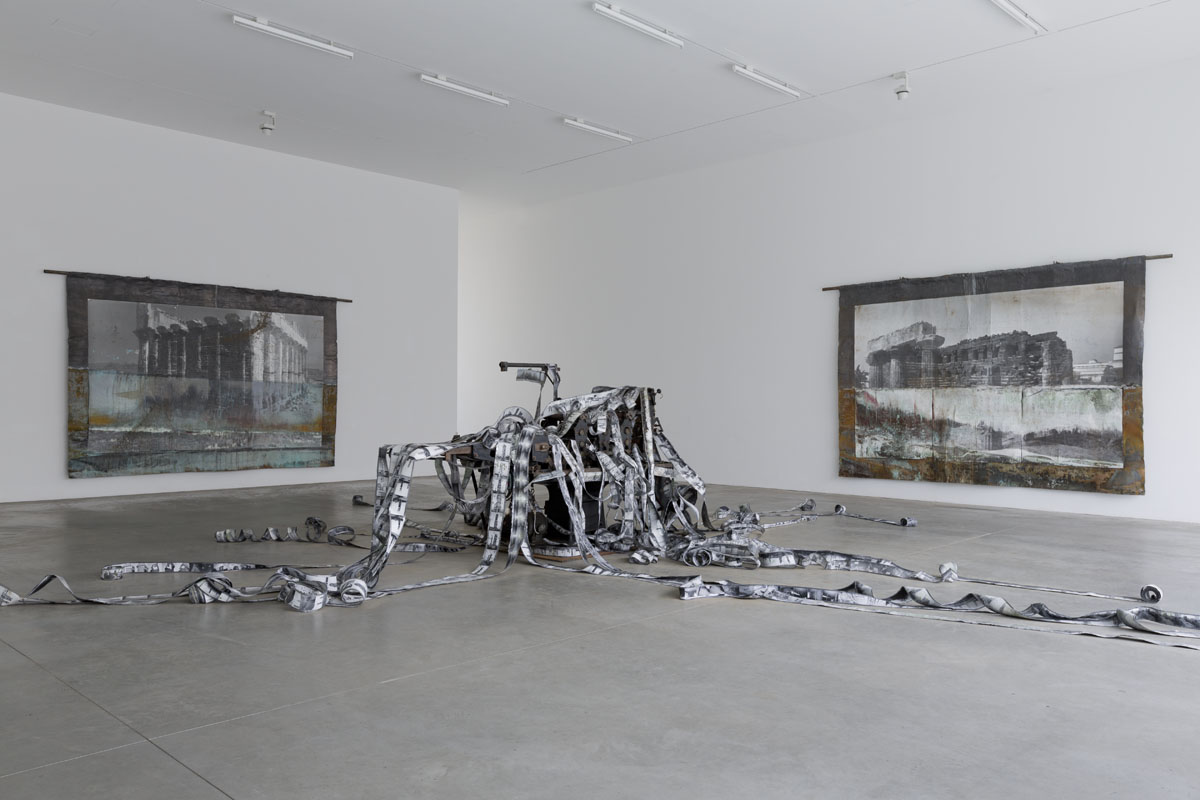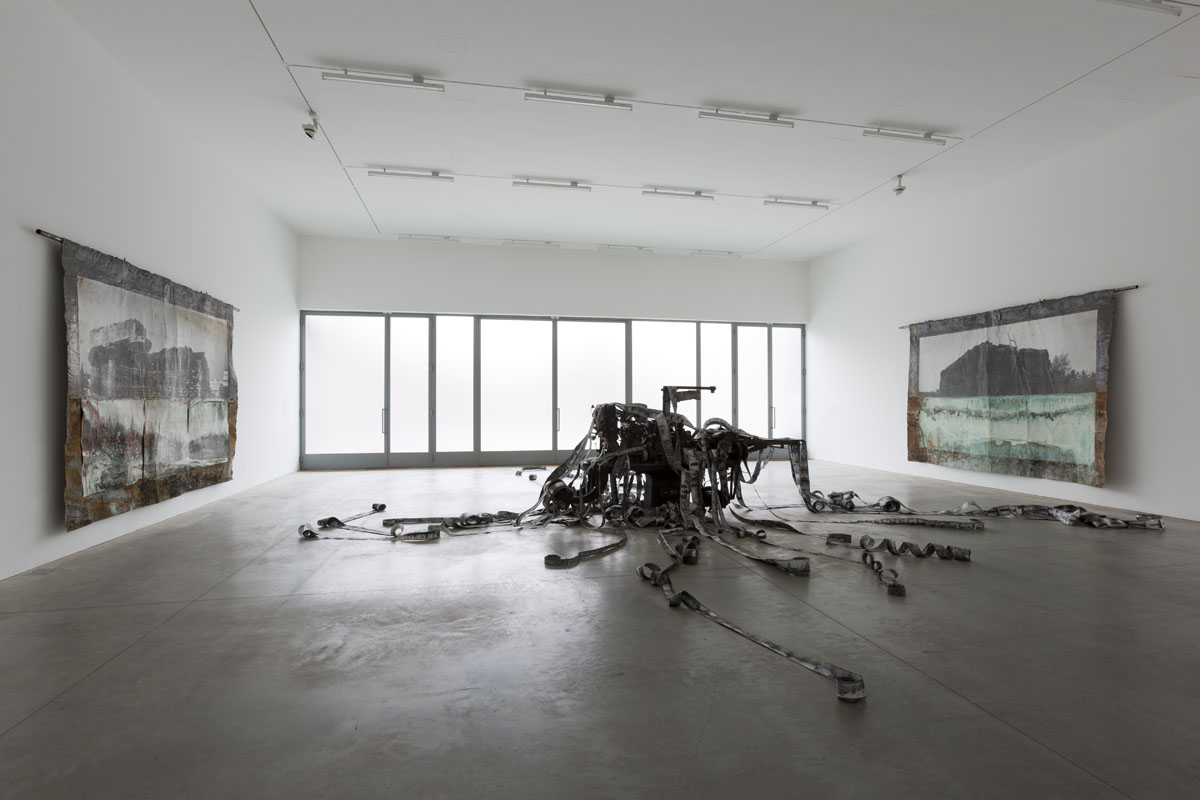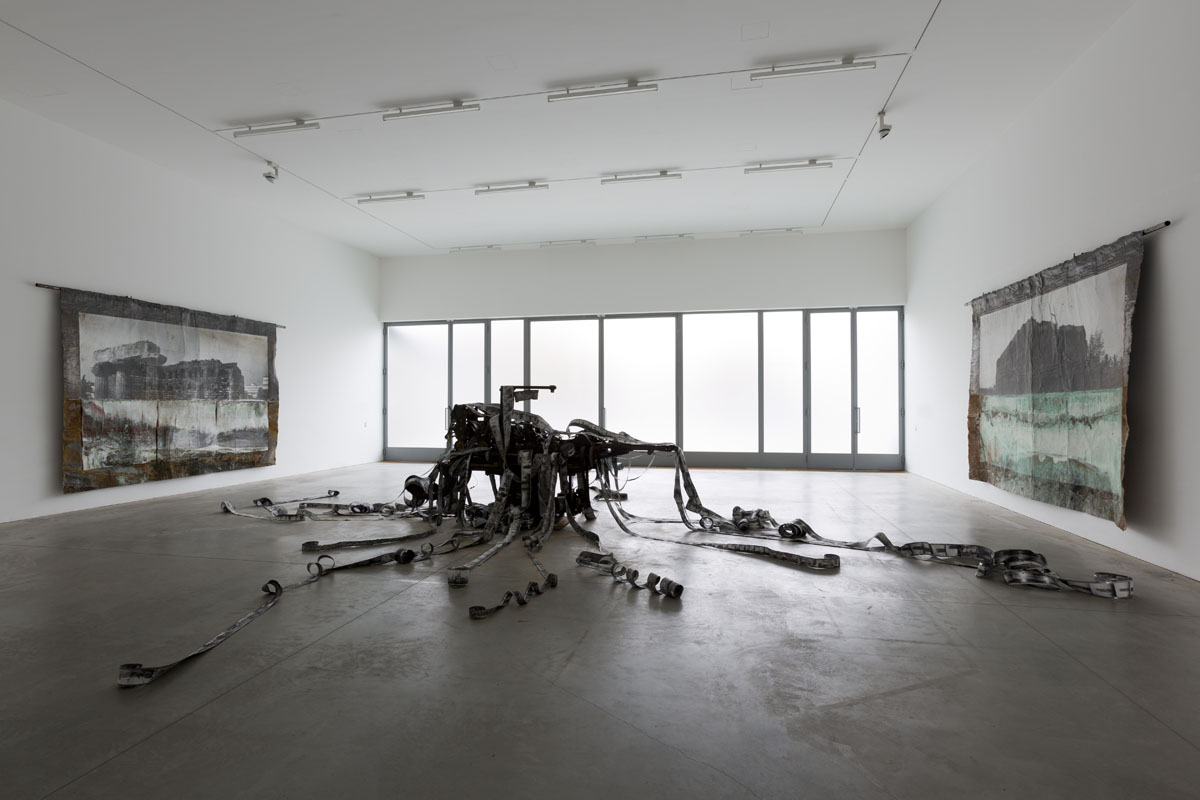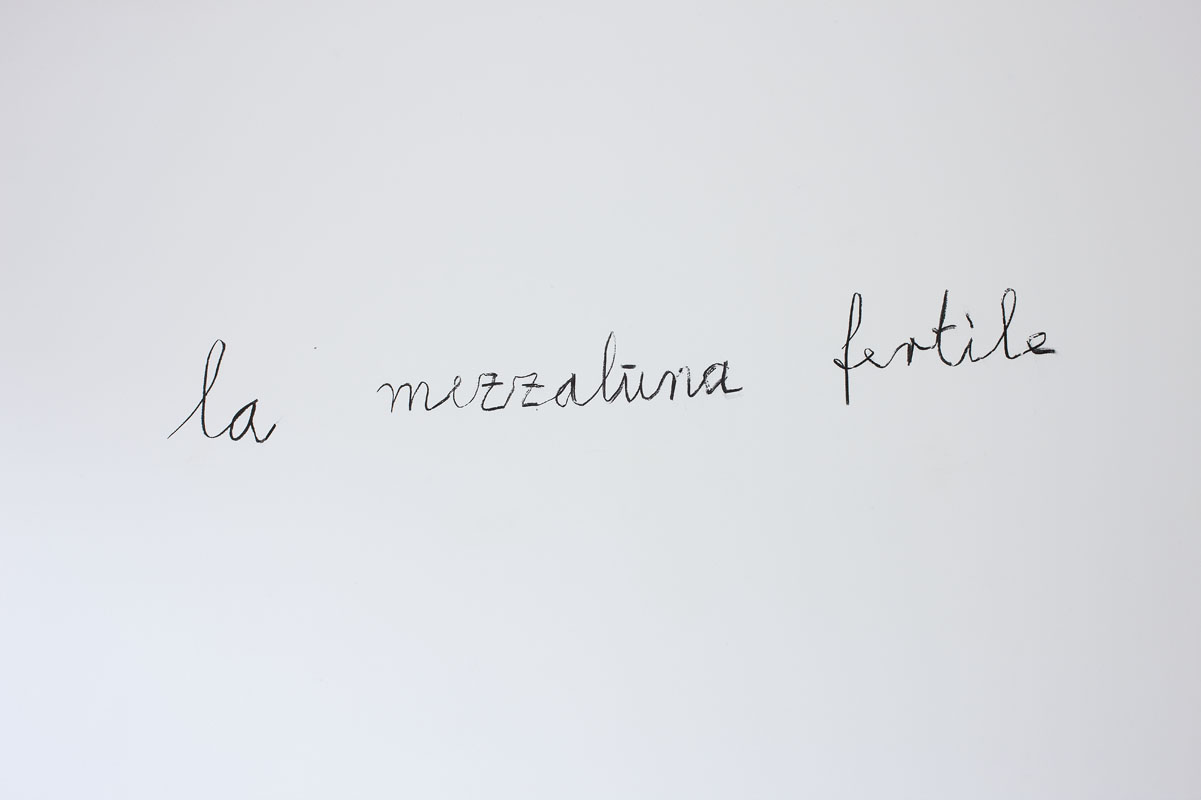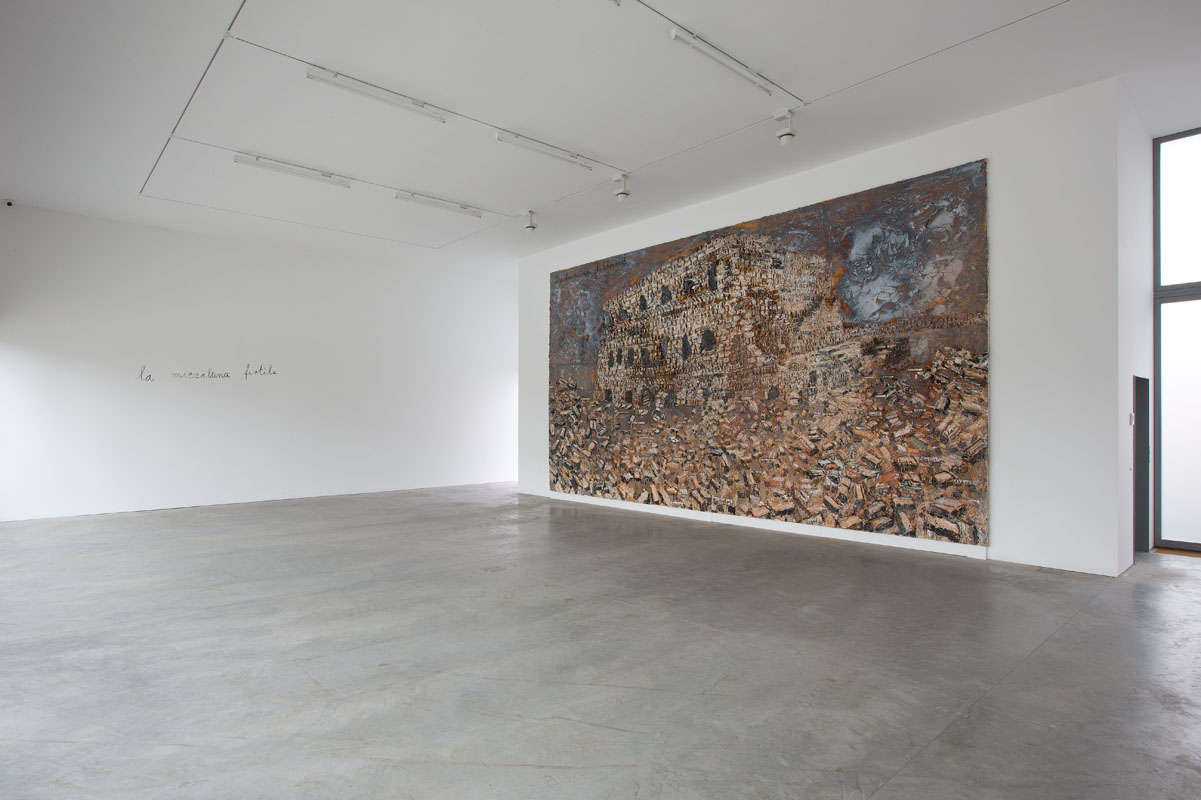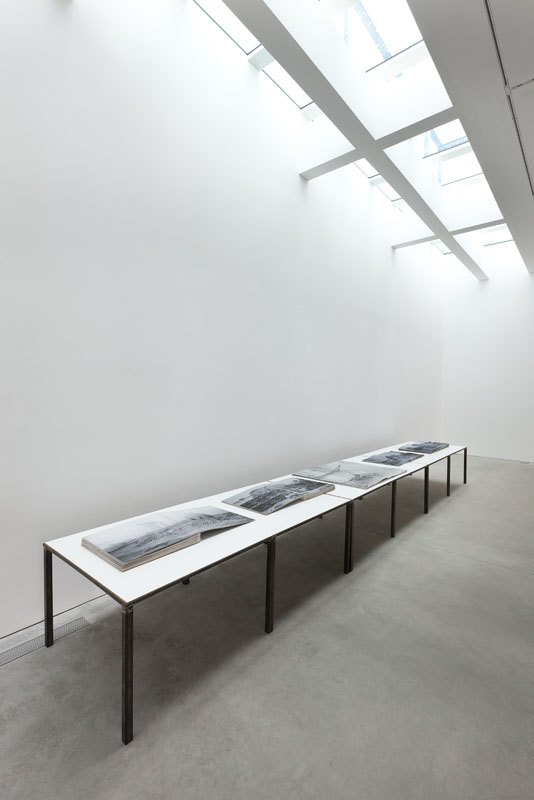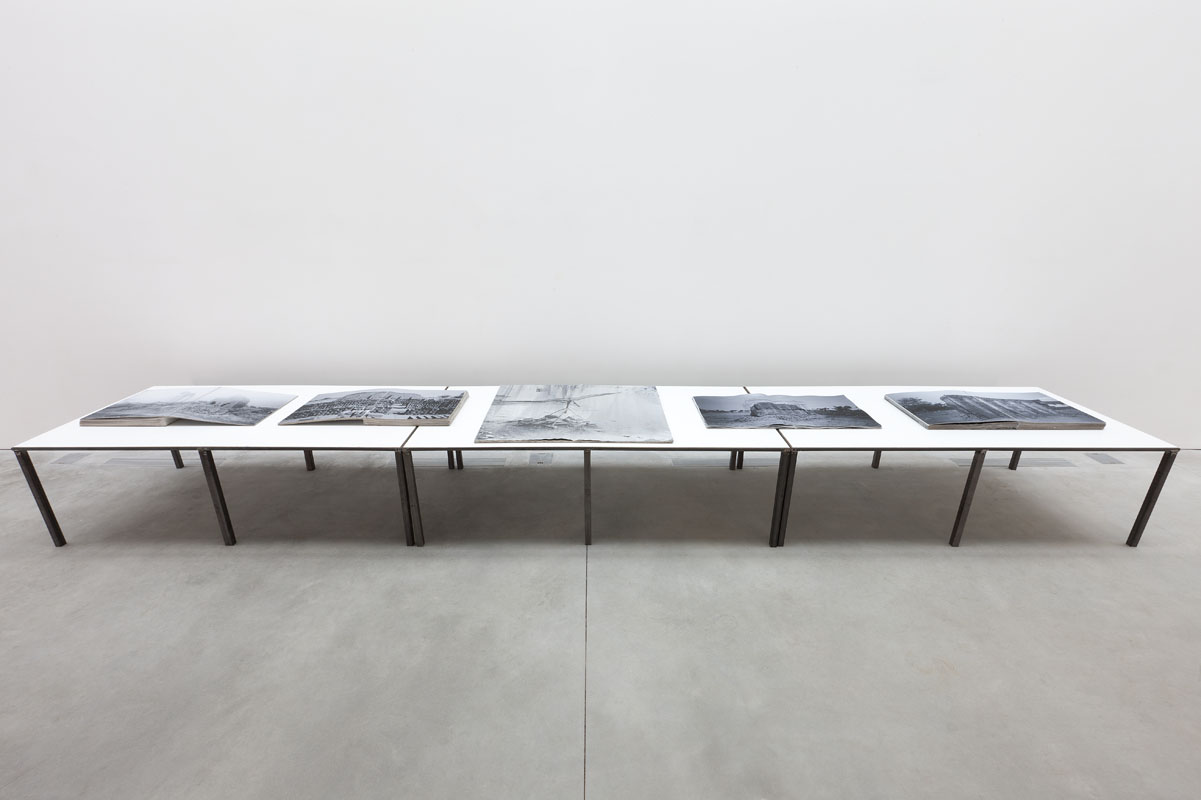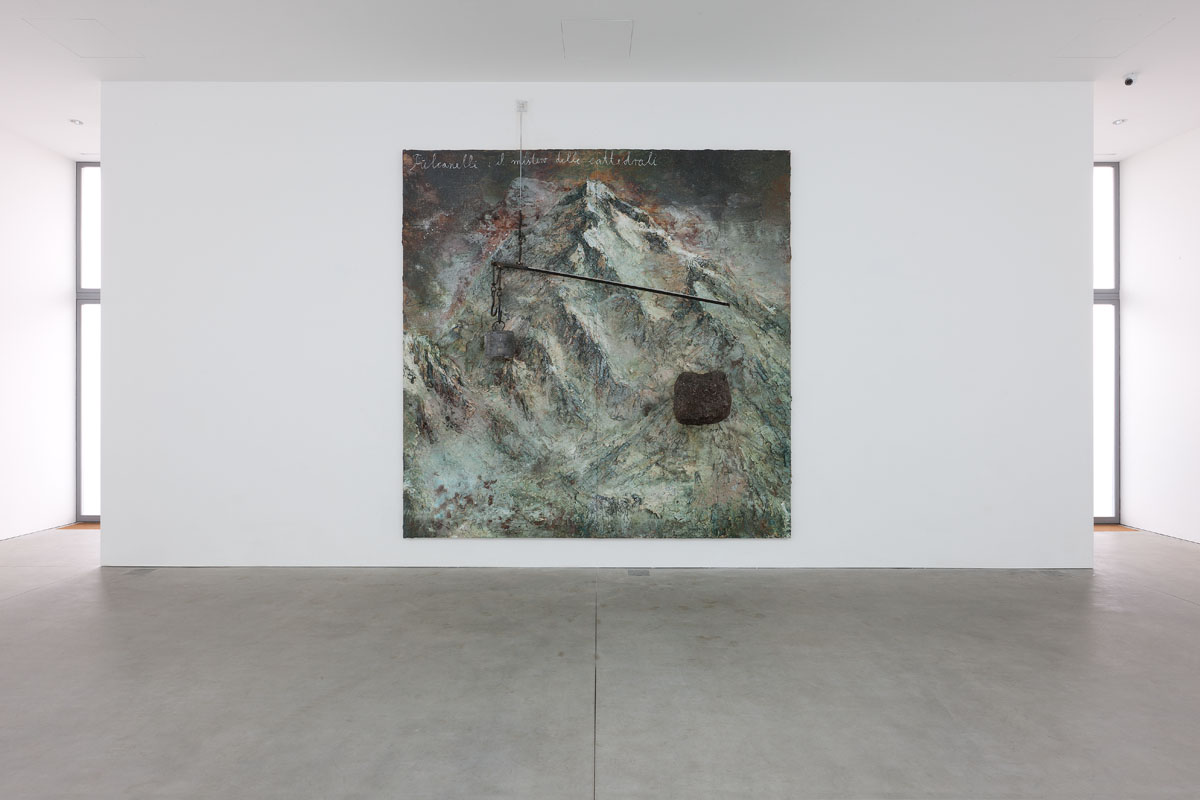A stunningly imaginative, eloquent project which reveals an extraordinary wealth of underlying cross-references, with all that they evoke and the diversity of artistic means used to express them. Once again, with his boundless creative tension, Kiefer “dives into history” and plunges his eye – his, as well as ours – into civilization’s birthplace, the strip of land that stretched from Ancient Egypt all the way to Mesopotamia. His research is not inspired by nostalgia but rather by the need to question that world, with its kingdoms and cities, and the fragile material of its architectures. In the clayey, muddy landscapes that open the exhibition, dotted with ruins and the remains of ancient buildings, Kiefer brings back fragments of the past for our thoughts’ use. What falls is neither forgotten nor set aside, but becomes that still-open place where future knowledge is built, and where East and West can come together. The three works named after the Fertile Crescent clearly reveal the artist’s extraordinary ability to capture and give new life to the energy that bursts forth from that Babelic world together with the value acquired by dispersion and chaos.
Further confirmation of this can be seen in the spellbinding sculpture Bavel Balal Mabul: an old printing press from which leaden tongues emerge, racing off in all directions, generating an endless, unstoppable echo of images depicting architectural constructions and towers. Some key episodes of the Book of Genesis – the Tower of Babel, the confusion of languages, the Flood – are onomatopoeically summed up in the title of the sculpture and offered quite simply as paradigms of creation, of the birth of language and of the wealth of difference. Yet while the artist’s task is also to “draw connections” and “tie the invisible thread between things”, the works in the new series, The Shape of Ancient Thought, conjure up syncretic understandings between time and thoughts that are only apparently far removed. The affinities between pre-Socratic Greek philosophy and Hindu wisdom, as investigated by Thomas McEvilley in his 2002 essay, acquire form in the process of electrolysis that the artist first experimented with during his solo exhibition at Fondazione Vedova in Venice in 2011. The works appear as curtains made of lead – the material par excellence of Kiefer’s artistic workshop – on which photographs of Greek and Indian temples are blurred together by the effects of chemicals. This creates an absolute circularity between the energy that transforms matter and memory, which is the incandescent substance of history and of human nature. Allusions to the lexicon of alchemy also appear in The Mystery of the Cathedrals, the artist’s homage to the fleeting figure of Fulcanelli, who in 1926 wrote one of the key texts for the interpretation of the Great Work.
Anselm Kiefer
Der fruchtbare Halbmond La Mezzaluna Fertile
Photo Gallery
L'artista
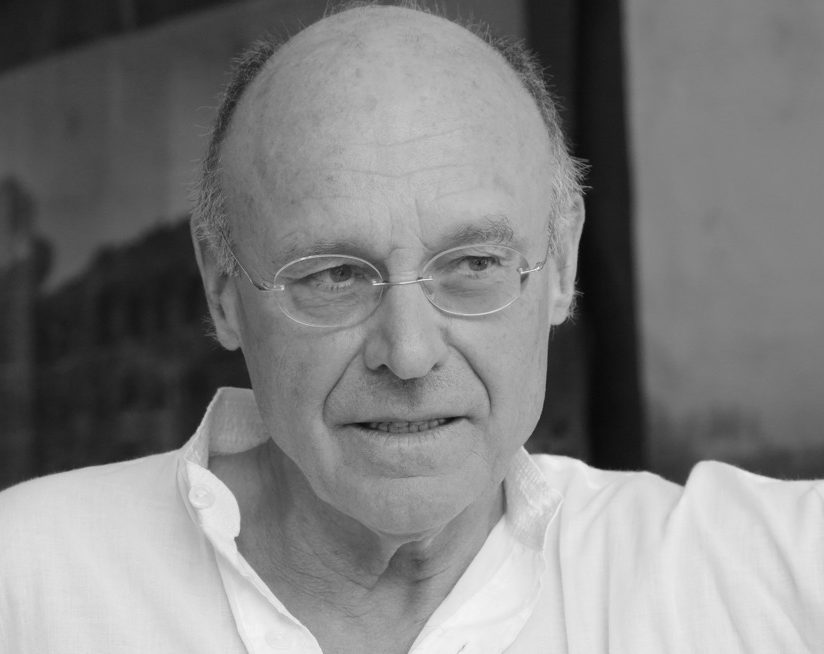
Anselm Kiefer was born in 1945 in Donaueschingen, Germany; he lives and works in Paris. Solo exhibition has been dedicated to Anselm Kiefer since the beginning of his carrier by prestigious museums among which: Kunsthalle, Bern (1978); Stedelijk Van Abbemuseum, Eindhoven (1979); Groniger Museum, Gronigen (1980); Museum Folkwang, Essen (1981);
